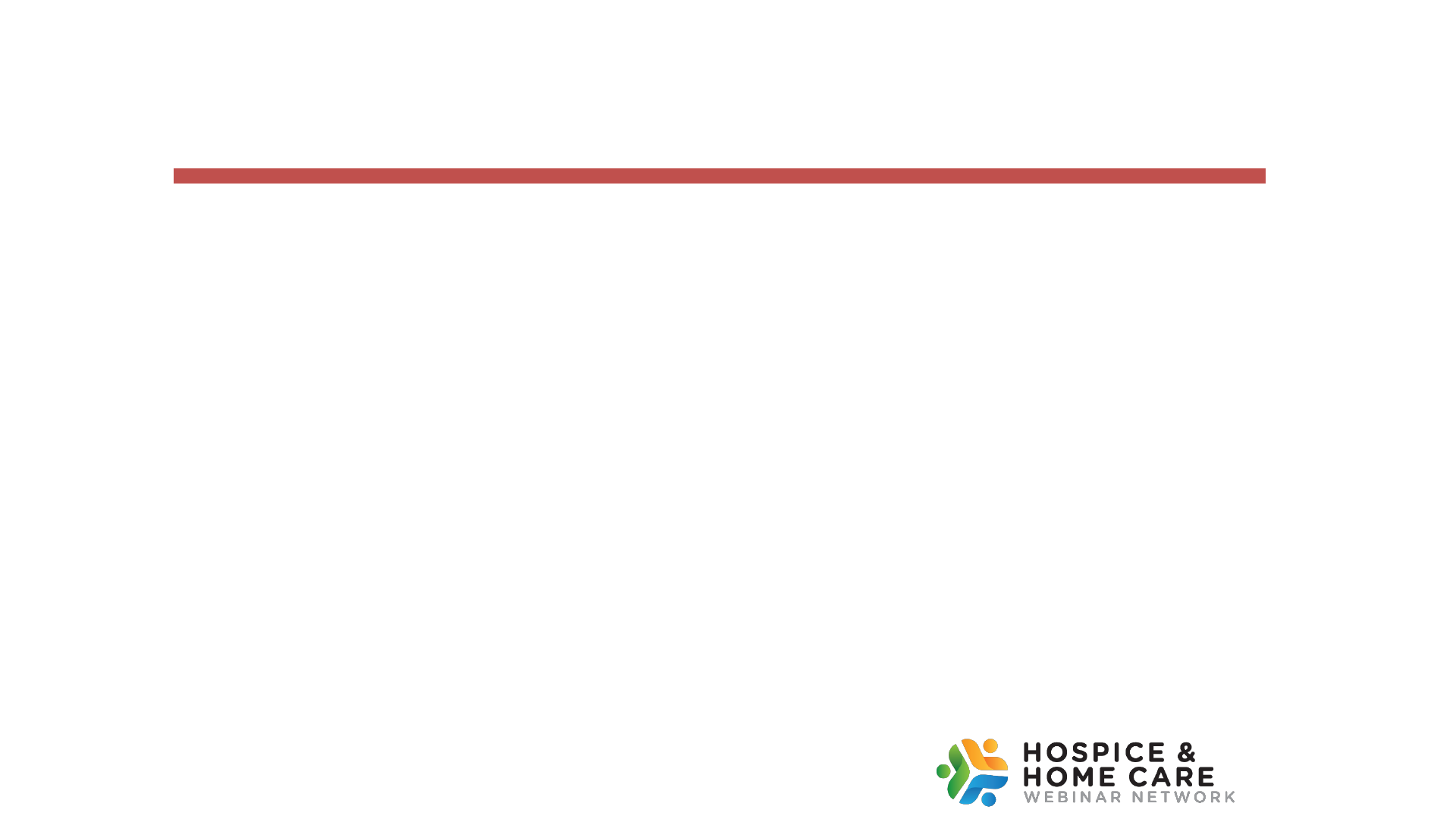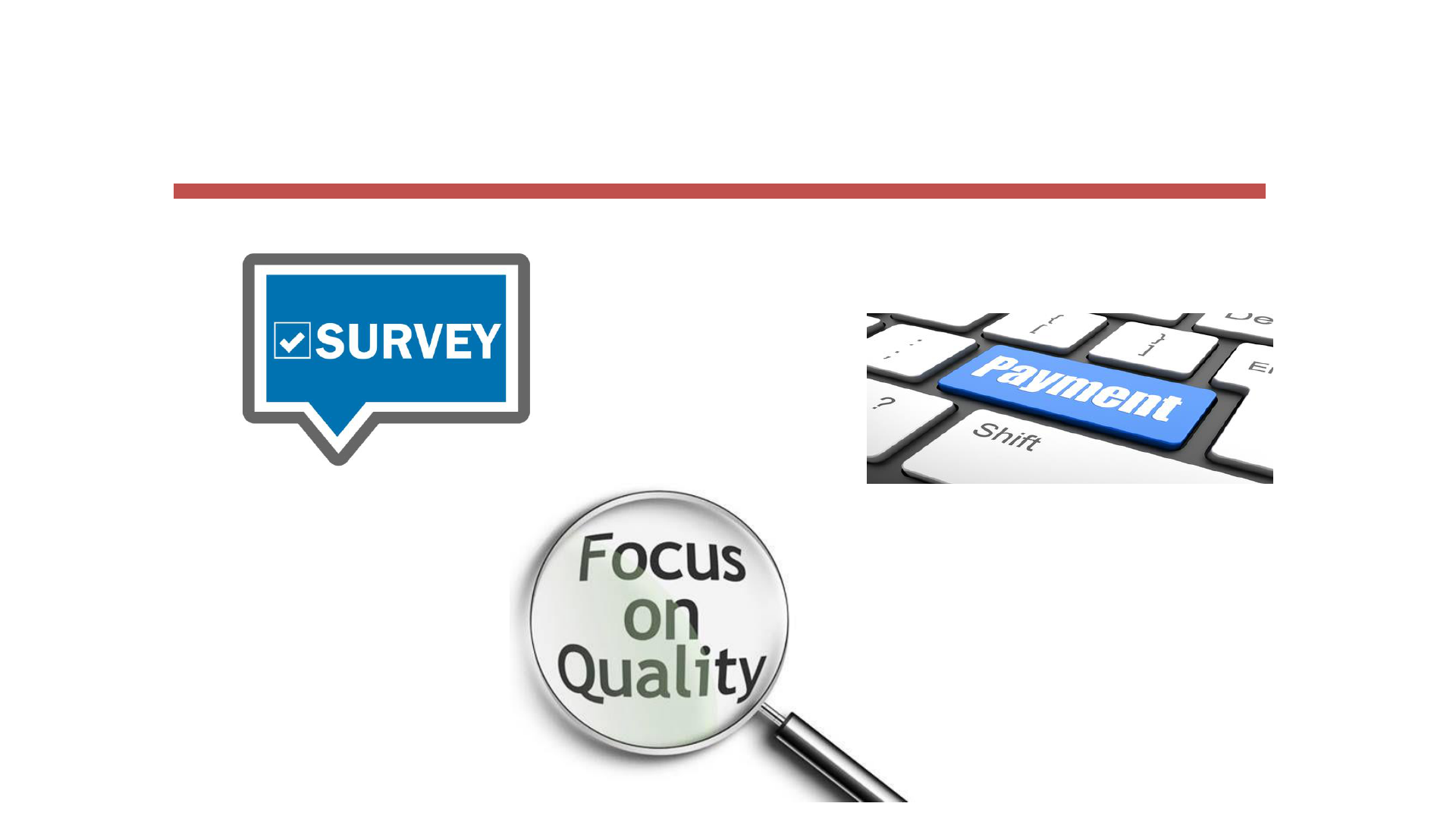
Disclaimer
This presentation is designed to provide accurate and authoritative information in
regard to the subject matter covered. The handouts, visuals, and verbal information
provided are current as of the webinar date. However, due to an evolving regulatory
environment, Financial Education & Development, Inc. does not guarantee that this is
the most-current information on this subject after that time.
Webinar content is provided with the understanding that the publisher is not rendering
legal, accounting, or other professional services. Before relying on the material in any
important matter, users should carefully evaluate its accuracy, currency, completeness,
and relevance for their purposes, and should obtain any appropriate professional
advice. The content does not necessarily reflect the views of the publisher or indicate
a commitment to a particular course of action. Links to other websites are inserted for
convenience and do not constitute endorsement of material at those sites, or any
associated organization, product, or service.
2

Sponsors
• Alabama Hospice & Palliative Care Organization
• Alaska Home Care & Hospice Association
• Arizona Hospice & Palliative Care Organization
• Arizona Association for Home Care
• Hospice & Palliative Care Association of Arkansas
• Florida Hospice & Palliative Care Association
• Georgia Hospice & Palliative Care Organization
• Kokua Mau – Hawaii Hospice and Palliative Care Organization
• Illinois Hospice & Palliative Care Organization
• Indiana Association for Home & Hospice Care
• Indiana Hospice & Palliative Care Organization, Inc.
• Kansas Hospice and Palliative Care Organization
• Louisiana-Mississippi Hospice and Palliative Care Organization
• Home Care & Hospice Alliance of Maine
• Hospice & Palliative Care Federation of Massachusetts
• Michigan HomeCare & Hospice Association
• Minnesota Network of Hospice & Palliative Care
• Home Care & Hospice Association of NJ
• Hospice & Palliative Care Association of New York State
• New Mexico Association for Home & Hospice Care
• Association for Home & Hospice Care of North Carolina
• Oklahoma Hospice & Palliative Care Association
• Oregon Hospice Association
• Pennsylvania Hospice and Palliative Care Network
• South Carolina Home Care & Hospice Association
• Texas & New Mexico Hospice Organization
• Utah Hospice and Palliative Care Organization
• Virginia Association for Hospices & Palliative Care
• Washington State Hospice and Palliative Care Organization
• Hospice Council of West Virginia
Directed by
The Hospice & Home Care Webinar Network
3

Today’s Presenter: Katie Wehri, CHPC
Katie has been working in the hospice, home health, private duty, and
palliative care industries for over 25 years and has held executive-level
positions. She is the Director of Operations Consulting for Healthcare
Provider Solutions in Nashville and provides education, conducts operational
reviews, and works with the HPS clinical team on mock surveys and chart
reviews. She is also certified by the Health Care Compliance Association in
health care privacy compliance.
4
Katie has worked for organizations in a variety of settings, including multiple locations in
multiple states, a hospice inpatient unit, pediatric hospice, and adult and pediatric palliative
care. In addition, Katie has an extensive background in health care regulation and accreditation
standards interpretation; compliance and quality assessment; performance improvement; and
opening and expanding sites for home health, hospice, and palliative care services. Katie has
been consulting, presenting, and educating in these areas since 2009.

Compliance – Regulatory
Survey and Certification and Payment
• Assessments
• Plan of care
• Reasonable and necessary
• Eligibility
– For the hospice benefit
– Levels of care
5

Medical Social Services
Medical social services must be provided by a qualified social
worker, under the direction of a physician.
Social work services must be based on the patient’s psychosocial
assessment and the patient’s and family’s needs and acceptance
of these services.
6

Medical Social Services
Qualified:
• Must have one year of experience in a health care setting
• Degree
– MSW degree from a school of social work accredited by the Council on
Social Work Education (CSWE)
– BSW degree from a school of social work accredited by CSWE AND
supervised by a qualified MSW
– Baccalaureate degree in psychology, sociology, or other field related to
social work AND supervised by a qualified MSW
7

Spiritual Counseling
The hospice must:
• Provide an assessment of the patient’s and family’s spiritual needs.
• Provide spiritual counseling to meet these needs in accordance with the
patient’s and family’s acceptance of this service, and in a manner
consistent with patient and family beliefs and desires.
• Make all reasonable efforts to facilitate visits by local clergy, pastoral
counselors, or other individuals who can support the patient’s spiritual
needs to the best of its ability.
• Advise the patient and family of this service.
8

• Bereavement counseling is available to the patient and his or her
immediate family to provide emotional, psychosocial, and spiritual
support and services before and after the death of the patient and to
assist with issues related to grief, loss, and adjustment for up to 1 year
after the patient’s death.
• Bereavement counseling consists of counseling services provided to the
individual’s family before and after the individual’s death. Bereavement
counseling is a required hospice service, provided for a period up to 1
year following the patients' death. It is not separately reimbursable.
Bereavement Counseling
9

Bereavement Counseling
• The hospice must make bereavement services available to the
family and other individuals identified in the bereavement plan
of care up to 1 year following the death of the patient
❖Family and other individuals
❖Bereavement plan of care
10

Bereavement Counseling
• Organized program
• Furnished under the supervision of a qualified professional with
experience or education in grief or loss counseling
• Bereavement extends to residents of a SNF/NF or ICF/MR when
appropriate and identified in the bereavement plan of care
• Volunteers in bereavement
11

Bringing it Together
12

Targeted Probe & Educate
• TPE
• Implemented October 2017
• Three rounds
• Each MAC chooses probe topics
– Length of stay
• Non-cancer
• SNF, NF, LTC
– General Inpatient (GIP) level of care
– Eligibility
13

Hospice Social Worker & Chaplain
• Eligibility
– For the hospice benefit
– Levels of care
• Assessments
• Plan of care
14

Medicare Hospice Eligibility
• Defined process from referral to admission
– Lays out responsibility for obtaining the clinical information
– Communication flow
• Nurses and physicians – document against the local coverage
determination (LCD) and level of care criteria
• Social workers and chaplains – reiteration and supportive
documentation
15

Eligibility
Ongoing Eligibility
– Every update to the comp assessment
– IDG summaries
– Visit notes
16

Hospice Eligibility
• Decline in clinical and functional status
• Documentation guidelines
– “Paint the picture”
– Individual patient information
– Objective criteria
17

Hospice Eligibility
• Cognitive status
• Functional status
• Nutritional status
SEVERITY
18

Hospice Eligibility
Cognitive status
– “Had nice conversation with patient.”
– “Patient – no change.”
– “Patient alert and greeted me with a smile. She is having an exceptionally
good day.”
– “Patient no longer knows my name.”
– “I greeted patient but she does not respond like she used to.”
– “Daughter upset because her mother ‘does not even look at her anymore
– stares straight ahead’.”
– “Patient confusing actors on TV with family.”
19

Hospice Eligibility
Functional status
– “Patient in wheelchair” / “Patient slumped over in wheelchair
with pillows propping up her left side.”
– “He is no longer able to sit in the sun room with me as he is
sleeping in bed most of the day now.”
– “Patient doesn’t shake my hand when I leave anymore. He is
too weak.”
– “Patient stays in room most of the time now.”
20

Hospice Eligibility
Nutritional status
– “Patient eating her lunch in dining room.”
– “Patient continues to enjoy the milkshakes I bring her on
visits.” “Patient able to take only a few sips of the milkshake
I brought her.”
– “Patient’s breakfast tray untouched. Asked if she wanted some
juice and she said ‘No honey, I don’t want anything anymore.’”
21

Hospice Eligibility
• Must a patient decline in order to remain eligible?
• Does decline equal eligibility?
• Compare patient over time
• What you see
• What you feel
• What you hear
• What you smell
22

Oversight focus on GIP
Oversight focus on proper use of
the levels of care
Levels of Care
23

General Inpatient & Respite
• General inpatient (GIP)
– Short-term
– Provide pain and symptom mgmt that cannot be
provided in another setting
• Respite
24

Respite
• Five consecutive days at a time
• Only when necessary
• Occasional basis
• Myth: only once per benefit period/month
25

Imminent death alone is not the criterion for
the GIP level of care
• Symptom management that requires frequent skilled nursing
intervention as evidenced by change in respiratory status and
level of consciousness, etc.
• Symptoms which cannot be managed in another setting.
GIP Eligibility

When GIP Is NOT Billable
• Caregiver breakdown, unless patient need meets criteria
• Patient admitted to hospice while in a hospital, SNF, or hospice
inpatient unit, unless patient need meets criteria
• Unsafe/unclean home situation
• While awaiting nursing home placement, unless patient need
meets criteria
• Actively dying and not meeting the criteria for symptoms that
cannot be managed in another setting

Do
• Discharging planning begins on the first day of in-patient level of care and
continues throughout the in-patient level stay.
• Document the team’s effort to resolve patient problems at the lowest level
of care.
• Address discharge plans and why patient remains eligible for in-patient
level of care.
• Document patient response to interventions provided during the in-patient level
of care (Were they effective? Are they still effective?).
Inpatient Documentation Tips
Social Worker & Chaplain

Do
• Describe services provided. Think of your note as a bill to Medicare.
Each note must stand alone.
• Document the context and the events that led to the in-patient level of care.
• Document the failed attempts to control/manage symptoms prior to
in-patient level of care admission.
• Document care that caregivers cannot manage at home (frequent changes
in medication/medication titration etc.).
Inpatient Documentation Tips
Social Worker & Chaplain

Don’t
• Don’t use “patient is dying,” “end-of-life care,” “general decline,” or
“medication adjustment” to justify in-patient level of care unless you
ALSO document why these actions cannot take place in the home.
• Don’t document resolution of the precipitating events that led to in-patient
level of care without further documenting eligibility that maintains in-patient
level of care status or, alternatively, documentation describing efforts to
move the patient to a more appropriate setting, i.e., SNF or home.
Inpatient Documentation Tips

Inpatient Documentation Tips
Social Worker & Chaplain
• “Patient anxious.”
– “Patient asks not to be left alone, fidgeting with clothing, talking rapidly.”
• “Will be discharged when facility transfer plans are completed.”
– “Plans for patient to transfer to [facility], patient’s choice of options, will
not be complete until 7/24/18. Will discontinue GIP level of care and
resume routine home care as of today [7/22/18].”
• “Support given.”
– “Listened to patient express fear of dying. Nurse provided education on
disease process earlier today.”
31

Assessments
Initial
• Must be completed by
Hospice RN
• Within 48 hours after the
election of hospice care is
complete
̶ UNLESS the physician, patient
or representative requests
that it be completed in less
than 48 hours
Comprehensive
• Must be completed by
hospice IDG, in consultation
with attending physician
(if any)
• no later than 5 calendar
days after the election of
hospice care
32

Must address
• Physical, psychosocial,
emotional, and spiritual
status related to the terminal
illness and related conditions
Initial Assessment
33

Timeframe Completion of
Comprehensive Assessment
The hospice interdisciplinary group, in consultation with
the individual’s attending physician (if any)
No later than 5 calendar days after the election of
hospice care
34

• Definition states “… this includes a thorough evaluation of the caregiver’s
and family’s willingness and capability to care for the patient.”
• Must identify physical, psychosocial, emotional, and spiritual needs
related to the terminal illness that must be addressed in order to
promote the patient’s well-being, comfort, and dignity throughout the
dying process.
• Assessment would include, but not be limited to, screening for…
Comprehensive Assessment
35

• Pain
• Dyspnea
• Nausea
• Vomiting
• Constipation
• Restlessness
• Anxiety
• Sleep disorders
• Skin integrity
• Confusion
• Emotional distress
• Spiritual needs
• Support systems
• Family need for counseling
and education
• Additional information,
as necessary
Comprehensive Assessment
36

• Must take into consideration the following:
• Nature and condition causing admission (including the presence or lack
of objective data and subjective complaints)
• Complications and risk factors that affect care planning
• Functional status, including the patient’s ability to understand and
participate in his/her own care
• Imminence of death
• Severity of symptoms
Comprehensive Assessment
37

Must take into consideration the following:
• Drug profile
• Bereavement
• The need for referrals and further evaluation by
appropriate health professionals
• Must include data elements that allow for
measurement of outcomes
Comprehensive Assessment
38

Must be accomplished by the IDG, in collaboration with the attending
physician (if any)
Must consider changes that have taken place since the initial assessment
Must include information on:
• Patient’s progress toward desired outcomes
• Reassessment of the patient’s response to care
Must be accomplished:
• As frequently as the condition of the patient requires
• BUT no less frequently than every 15 days
Update of the
Comprehensive Assessment
39

The IDG, in consultation with the attending physician (if any), must
prepare a written plan of care for each patient
The plan of care must:
• Specify the hospice care and services necessary
to meet the patient and family-specific needs
identified in the comprehensive assessment as
such needs relate to the terminal illness and
related conditions
IDG & Care Planning
40

Patient and family goals and interventions
Based on problems identified in the
• Initial assessment
• Comprehensive assessment
• Updates to the comprehensive assessment
Plan of Care Content
41

Generic goals/goals not tied to problems identified in assessment
• “Facilitate the acceptance of change/loss/process”
• “Assist patient/patient caregiver/family in processing grief/loss/pain”
• “Patient transitions peacefully through the dying process”
• “Patient is supported regarding common experiences and responses
to dying”
Plan of Care Content
42

Must include all services necessary for the palliation and management
of the terminal illness and related conditions including
• Interventions to manage pain and symptoms
• Detailed statement of the scope and frequency of services
necessary to meet the specific patient and family needs
• Measurable outcomes anticipated from implementing and
coordinating the plan of care
Plan of Care Content
43

Hospice IDG, in collaboration with the patient’s attending
physician (if any) must:
• Review, revise, and document the individualized plan
• As frequently as the patient’s condition requires
• But no less frequently than every 15 days
Review of the Plan of Care
44

Review/Revision to the Plan of Care
• Direct link between needs identified in the comprehensive
assessment and the plan of care
• Problem, intervention, goal
• Measurable outcomes
– Note patient’s progress toward goal
– Are the interventions effective?
45

Must develop and maintain a system of communication
and integration
• Provide for and ensure ongoing sharing of information
between all disciplines providing care and services in all
settings, whether directly or under arrangement
• Provide for ongoing sharing of information with other
non-hospice healthcare providers furnishing services
unrelated to the terminal illness and related conditions
Coordination of Services
46

Coordination –
Services Provided According to Plan of Care
System of communication between all IDG and non-hospice staff
47

• Must provide the facility a copy of the plan of care
• Plan of care must indicate who is responsible for what
• Assessments should include input from facility staff
• In addition to the initial/comprehensive assessment include
facility staff in
̶ Updates to the comprehensive assessments
̶ Review of the plan of care
Patients in Facilities
48

Directing, Coordinating & Supervising Care
• Ensure care provided is based on all assessments
(don’t forget bereavement)
• Ongoing sharing of information
– Between all disciplines
– All settings
49

Documentation
50

Questions or Comments?
51


